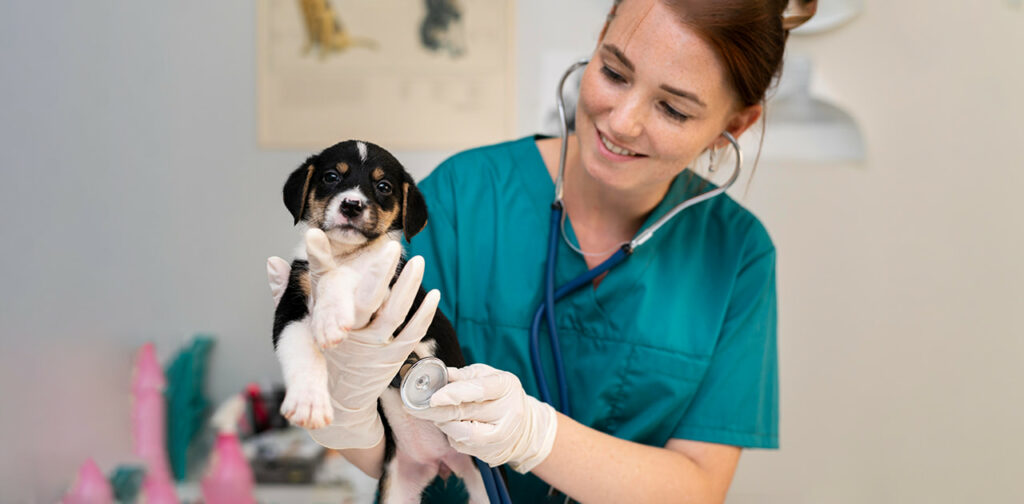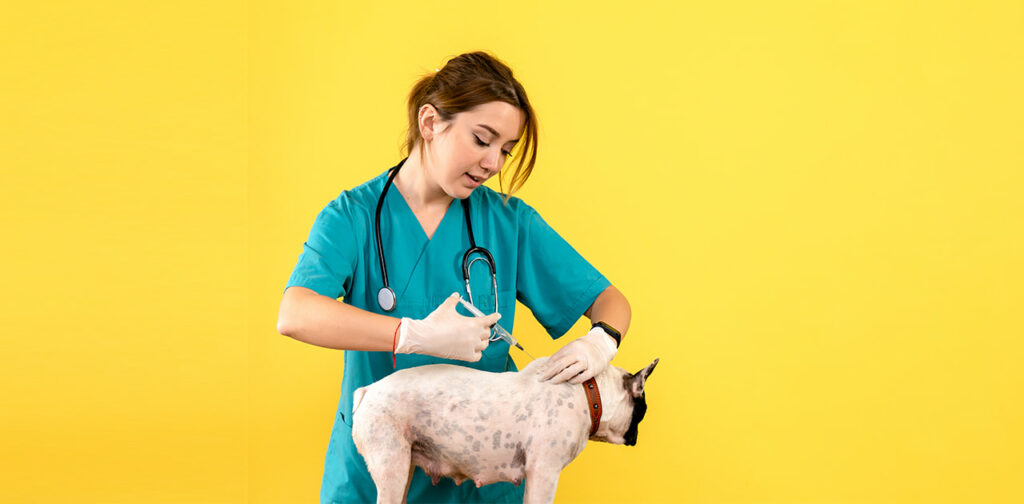Do you know neutered male dogs live around 18% longer, and spayed female dogs live about 23% longer in comparison with other dogs? This study has been conducted by Banfield Pet Hospitals. Spaying and neutering is one of the most responsible things that you can do as a puppy parent. As an experienced veterinarian I have compiled everything you need to know about spaying and neutering your puppy in this article, including, the difference between both, why should you spay or neuter your dog or puppy, when to do so, details of recovery and risks related to the procedure, and spaying and neutering cost around the world.

Spaying and Neutering
Before going through the process of spaying and neutering, it is important to educate yourself to ensure the optimal well-being of your little furry friend. Have a quick read to learn everything you need to know about spaying and neutering.
What is the difference between spay and neuter?
Spaying or Neutering is the process of sterilising a puppy so that when they turn into adult dogs they cannot reproduce. This involves either removing the animal’s reproductive organs or non-surgically sterilising them using chemicals or hormones. However, as you know the male and female reproductive organs in animals are very different from each other. Therefore, while this process has the same implications and intention, the procedure is different for each gender.
Spaying is the surgical removal of the ovaries and usually the uterus in female animals. Neutering, also known as castration, is the surgical removal of the testicles in male animals.
Why spay or neuter your dog or Puppy?
Primarily while spaying and neutering sounds like a solution to unwanted pregnancy and breeding, the implications of spaying and neutering go much further. Spaying and neutering help in population control resulting in fewer homeless dogs. Additionally, the neutering procedure helps in reducing aggressive behavior, excessive territorial attitude, and the habit of wandering away in dogs. It reduces excessive barking due to mating. Spaying and neutering also eliminate the risks of certain cancers and reproductive diseases. In female dogs spaying and neutering prevent them from going into heat, and eliminate the risk of uterine infections, mammary gland tumors, and ovarian cancer. Neutering a male does reduce the risk of testicular cancer, prostate problems, perianal tumors, and perineal hernias. If you want to avoid such issues, spaying and neutering may be the right choice for your dog or Puppy.

When Should You Spay or Neuter Your Dog?
For the future well-being of your dog, it is important to perform spaying and neutering when they are still in their puppyhood. Check out our blog article to know when your little puppy turns into an adult dog. The spaying and neutering timing will depend on your puppy’s breed size, weight, and age. For small to medium breed puppies weighing from 0 to 70 pounds, perform spaying around 5-6 months and neutering at 6 months. Accordingly, for large to giant breed puppies weighing over 70 pounds neuter after growth stops, around 12-18 months, and spay based on vet consultation. However, as an experienced veterinarian, I will always recommend you consult with a vet to determine the right time for spaying and neutering your puppy.
Recovery From Spay and Neuter Surgery
Spaying and neutering can be a stressful procedure for your puppy. The recovery will take time. Your puppy needs a lot of care and love throughout this recovery period. Proper medication, wound care, feeding easily digestible foods, restriction on physical activities, and plenty of quality time with your puppy will be required. The initial recovery period is 24 to 48 hours. However, most dogs completely recover within 10 to 14 days. Male puppies recovered a little faster around 5 to 7 days. Whereas female puppies may take 7 to 10 days to recover. However, if your puppy is taking more than 15 days to recover it is important to consult a veterinarian for immediate consultation.

Is Spay and Neuter Surgery Risky?
While spaying and neutering is a routine and safe procedure and, in most cases, puppies recover just fine, there are some risks included. Here are some risks to be considered before spaying and neutering your puppy.
- Risks Related to Anesthesia: Allergic reactions or breathing difficulties.
- Surgical Complications: Bleeding, infection, or incision-related issues.
- Spaying Risk in Large Breeds: Risk of certain orthopedics issues like cruciate ligament tears.
- Long-Term Health Issues: Conditions like urinary incontinence or specific cancers in some dogs, especially if performed very early.
- Irreversibility: spaying and neutering is not reversible. Therefore, if performed once your puppy will not be able to reproduce or breed ever.
However it is important to keep in mind that it is possible to mitigate these risks, and veterinarians are well equipped to deal with such situations.
Pros And Cons Of Spaying And Neutering Puppy Or Dogs
Before going through with any procedure it is important to weigh the pros and cons of the procedure in your puppy’s health and overall wellbeing. Let us discuss some pros and cons of spaying and neutering puppies or dogs.
Pros
Spaying and neutering have many benefits to enhance your little friend’s health and well-being.
- Spaying and neutering reduce the number of unwanted puppies and dogs in shelters.
- Spaying female dogs reduces health risks like uterine infections (pyometra) and mammary tumors.
- Neutering male dogs decreases the risk of testicular cancer and reduces the risk of prostate problems.
- Spaying and neutering can help reduce or eliminate certain undesirable behaviors making both male and female dogs more manageable and easier to train.
- Spayed and neutered dogs tend to live longer compared to intact dogs due to reduced health risks.
Cons
Spaying and neutering dogs has several potential drawbacks to consider.
- Any surgical procedure carries inherent risks, such as anaesthesia, infection, and bleeding.
- Spayed and neutered dogs may have a tendency to gain weight easily.
- Spaying and neutering at a young age may affect the growth and development of certain dog breeds.
- Spaying and neutering can lead to hormonal changes leading to challenges with metabolism, coat quality, and behaviour.
- The cost of spaying and neutering procedures can be a matter of concern for puppy owners.
What does it cost to spay or neuter a puppy or dog?
Here is a chart to give you some idea about how much spaying and neutering may cost you around the world.
| Region/Country | Cost (USD) |
| North America | $40 – $600 |
| Western Europe | $100 – $400+ |
| Australia & New Zealand | $150 – $500+ |
| Japan | $30 – $600+ |
| South America | $35 – $200+ |
| Southeast Asia | $20 – $150+ |
| Africa | $60 – $200+ |
| Eastern Europe | $100 – $650+ |
Final Words
Spaying and neutering are essential to ensure the long-term health and well-being of your puppy. The benefits of spaying and neutering outweigh the risks in many ways. However, it is important to evaluate both from your point of view. Every puppy and their parents have a unique relationship and requirements. We wish you the best of luck in making the right decision for your little furry friend. For more information relevant to puppy care check out our website.





